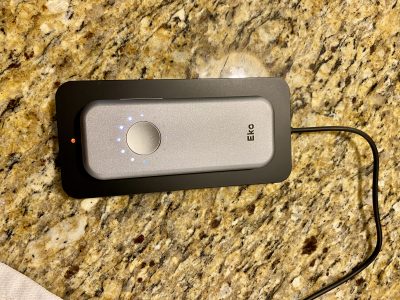The 1st Marine Division is now reported (by CNN) to be on the move across the border from Kuwait into Iraq. I was part of the 1MARDIV for 4 years, but never (thankfully) in combat.
In peacetime most battalions will have one doctor and a variable number of corpsmen; memories play tricks, but I seem to recall the wartime TO for a BN was 2 doctors and about 48 corpsmen. At least half those corpsmen would be in the rifle companies (where the casualties would be most likely to occur), and a battalon aid station (BAS) with the doctors and corpsmen. They have had ATLS and have the ability to intubate (but not RSI unless things have changed recently), chest tubes, and pressure dressings. The docs have completed internships but no specialty training. They have crystalliod volume expanders but no blood, no cardiac monitor or defibrillator (although Corpsmen seem to appropriate things they think they’ll need, so individual units will be better equipped). This care is doctrinally given within about 1000 meters of the battle lines. The aim is all ATLS, and all aimed at ABC’s and evac.
The next stop is a Casualty Clearing Station, which should have a Dentist (Dental officers do triage in the Navy when the Surgeons are busy, and they’ll be busy), then a surgeon or an EP, or both. (Oh, the Dental officers do some backup anesthesia, too). The point here is the stabilization that didn’t happen at the BAS, then getting them to the fleet hospital in the right order. I think they can give untyped blood there, but no big operations wil happen. This is 1 – 10 miles behind the battle lines.
The next stop is either a Fleet Hospital or a Hospital Ship; these are scratch hospitals for trauma, heavy on surgeons, orthopedists, etc, for definitive stabilization. Then, if required, the casualty can be returned to a fixed medical facility for further care and rehabilitation. I never saw either of these, this is all from my initial battalion surgeon training.
Having been a battalion doc for the USMC, I know what their training, staffing and supplies are, and I wish them the best of luck. I sincerely hope things have changed, but when I was in there was only minimal casualty play in any training scenario, and we would not have been ready to evacuate our wounded. There’s a lot of reasons this training didn’t happen, and many are valid, but I sincerely hope this has changed. Here’s hoping for the best for them and their patients.




I was a USN GMO and FS. Got my SWA ribbons. BAS equipment is pretty basic. And the doctor’s training is as you describe, pretty basic. (I have my thoughts on that, which I’ ll save for another time.) I wish them well, too.
Things have changes alot, as a former corpsman my self I am highly impressed at the training and equipment that my husband who is a navy corpsman/paramedic with the FRSS team that Dr. Gupta is with. The training these corpsman have received is at or above 4th-year medical students. And as far as the doctors being GMO’s, I have 5 of my doctors from the ER over there also, they are all certified in emergency medicine. 95% of the doctors there are specialist of one kind or another.
Things have changes alot.